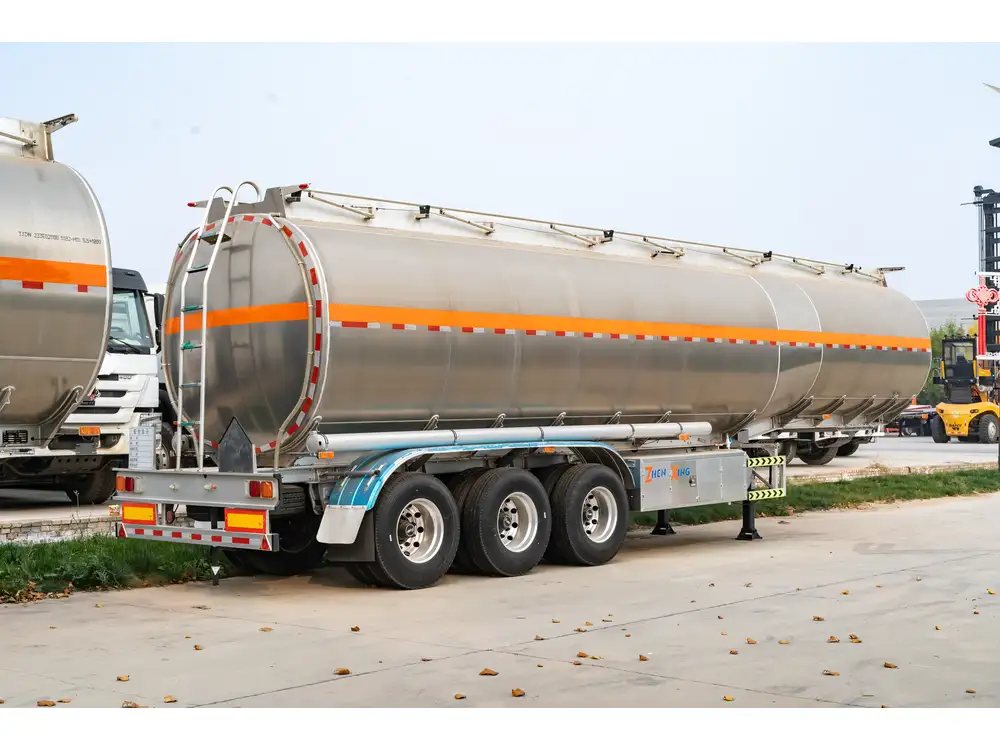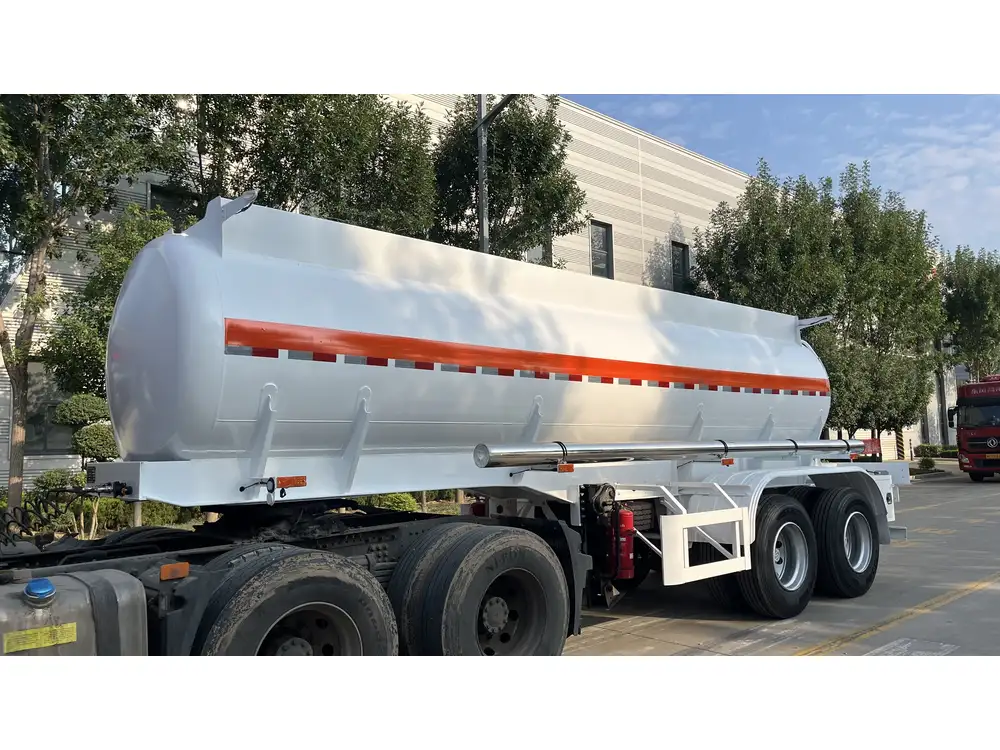When it comes to the intricate machinery of semi-trailers, the braking system stands out as an essential component. The fundamental importance of how semi-trailer brakes work cannot be overstated, as it is pivotal for safety, efficiency, and regulatory compliance. Below, we delve into the complexities of semi-trailer brakes, exploring various types, their mechanisms, and critical maintenance practices.
Table of Contents
- Types of Semi-Trailer Brakes
- 1.1 Disc Brakes
- 1.2 Drum Brakes
- How Semi-Trailer Brakes Work
- Key Components of Semi-Trailer Brakes
- 3.1 Brake Shoes and Pads
- 3.2 Brake Chambers
- 3.3 Slack Adjusters
- Braking Performance Factors
- Maintenance Tips for Semi-Trailer Brakes
- Conclusion
Types of Semi-Trailer Brakes
Brakes in semi-trailers generally fall into two major categories: disc brakes and drum brakes. Each type possesses unique features and operational principles, influencing the overall braking efficiency and performance.

Disc Brakes
Disc brakes consist of a disc (rotor) that rotates with the wheel, and brake pads that clamp onto the disc to create friction, thereby slowing down or stopping the vehicle.
Advantages of Disc Brakes:
- Superior Heat Dissipation: They are less prone to fading under prolonged use due to their ability to dissipate heat quickly.
- Consistent Performance: Disc brakes offer improved stopping power and more consistent performance across different conditions.
Disadvantages of Disc Brakes:
- Higher Initial Cost: The upfront cost can be significantly higher than drum brakes.
- Complexity: Disc brakes require more components, leading to potential repairs that can be more complicated.
Drum Brakes
Drum brakes work by expanding brake shoes against the inner surface of a rotating drum to create friction.
Advantages of Drum Brakes:
- Cost-Effective: Generally, drum brakes are less expensive to manufacture and install.
- Self-Boosting Feature: The design allows them to self-boost, providing effective braking with less effort on the brake pedal.
Disadvantages of Drum Brakes:
- Heat Management: They can overheat more quickly, leading to brake fade under heavy loads or prolonged braking.
- Maintenance Challenges: Over time, drum brakes may require more maintenance, such as adjusting shoe tension.
How Semi-Trailer Brakes Work
While the type of brake system on a semi-trailer can greatly affect braking performance, understanding the core functioning of these systems is fundamental in grasping their operational capabilities.

Hydraulic Brake Systems
Hydraulic brake systems use fluid to transmit pressure from the brake pedal to the brake components. When the driver presses the brake pedal, hydraulic fluid is pushed through the system, engaging the brakes.
Operating Principle:
- Pedal Engagement: The driver applies force through the brake pedal.
- Fluid Transmission: The connected hydraulic lines transmit that force via brake fluid to the brake cylinders.
- Brake Activation: The brake cylinders activate brake shoes or pads, creating friction to slow down or stop the trailer.
Pneumatic Brake Systems
Pneumatic brake systems are predominant in heavy-duty vehicles, including semi-trailers. They utilize compressed air to operate.
Operating Principle:
- Air Supply: The system is pressurized by a compressor connected to the engine, filling the air tanks.
- Brake Actuation: When the driver engages the brake, air pressure is released in specific chambers, pushing the brake shoes or pads into contact with the drums or discs.
- Stopping Force: The friction generated between the components slows or halts the movement of the trailer.
Key Components of Semi-Trailer Brakes
Understanding the components of semi-trailer brakes is essential for both effective operation and maintenance.

Brake Shoes and Pads
Brake shoes (in drum brake systems) and brake pads (in disc brake systems) create the necessary friction to slow down the wheels.
| Component | Function | Material Used |
|---|---|---|
| Brake Shoes | Expand outward against the drum when brakes are applied | Steel, friction material |
| Brake Pads | Clamp against the disc, applying stopping force | Composite, metallic material |
Brake Chambers
Brake chambers are the heart of pneumatic brake systems. They convert air pressure into mechanical force to activate the braking components.
- Types of Brake Chambers:
- Single-Diaphragm Chambers: Generally used on trailers with lighter loads.
- Dual-Diaphragm Chambers: Provide more power and are often used in heavier, commercial applications.
Slack Adjusters
Slack adjusters are crucial for maintaining proper brake functionality. They automatically adjust the distance of brake shoes or pads to ensure optimal contact with their respective components.
- Types of Slack Adjusters:
- Manual Adjusters: Require intervention for adjustments.
- Automatic Adjusters: Self-adjust for optimal performance, reducing the need for frequent maintenance.

Braking Performance Factors
The performance of semi-trailer brakes is influenced by various factors that should be understood by operators and manufacturers alike.
Weight Distribution
Proper weight distribution across the trailer plays a vital role in effective braking. Uneven weight can cause premature brake wear, reduce stopping efficiency, and lead to dangerous situations.
- Best Practices:
- Regularly check weight distribution before operation.
- Ensure even loading, with weight centered and distributed along the axle lines.
Surface Conditions
The condition of the road surfaces can significantly impact braking performance. Wet, icy, or uneven surfaces can increase stopping distances and the risk of skidding.
- Surface Monitoring:
- Consider maintaining a low speed on hazardous surfaces.
- Adjust braking pressure based on conditions to enhance traction.

Maintenance Tips for Semi-Trailer Brakes
Regular maintenance is essential for sustaining the functionality and safety of semi-trailer braking systems. Here are some best practices to enhance safety and performance:
Regular Inspections:
- Conduct comprehensive inspections every 10,000 miles or as often as recommended by manufacturers, focusing on brake pads or shoes, drums or discs, and air chambers.
Check Brake Fluid:
- In hydraulic systems, monitor brake fluid levels and conditions regularly. Contaminated fluid can lead to system failure.
Examine Air Pressure:
- For pneumatic systems, ensure the compressor and air tanks are functioning correctly by routinely checking the supply of compressed air.
Adjust Slack Adjusters:
- Inspect and adjust slack adjusters to maintain optimal engagement of brake components, ensuring even wear.
Replace Worn Components:
- Address any signs of wear or damage by replacing malfunctioning parts promptly to prevent further complications.
Maintain Brake Line Integrity:
- Inspect brake lines for any signs of leaks or damage; replace aged and corroded lines to ensure system integrity.
Conclusion
Understanding how semi-trailer brakes work is paramount for any operator or manufacturer in the logistics and transportation sectors. The type of brake system employed can significantly influence safety and performance in commercial settings. The complexities of hydraulic versus pneumatic systems, the essential components involved, and the various considerations of weight distribution and surface conditions are crucial for optimizing braking performance.
Moreover, implementing sound maintenance practices will ensure that semi-trailer brakes operate effectively, reducing the risk of accidents and improving overall safety on the roads. By committing to regular inspections, timely replacements, and a thorough understanding of braking technology, we can enhance operational efficiency and protect both goods and lives in transit.



